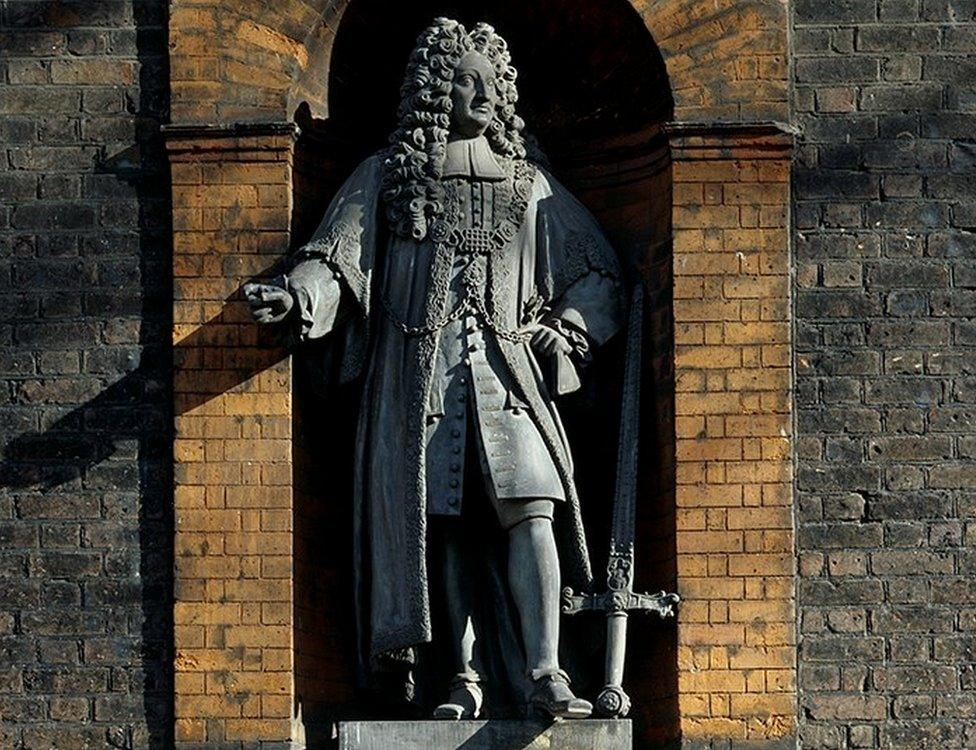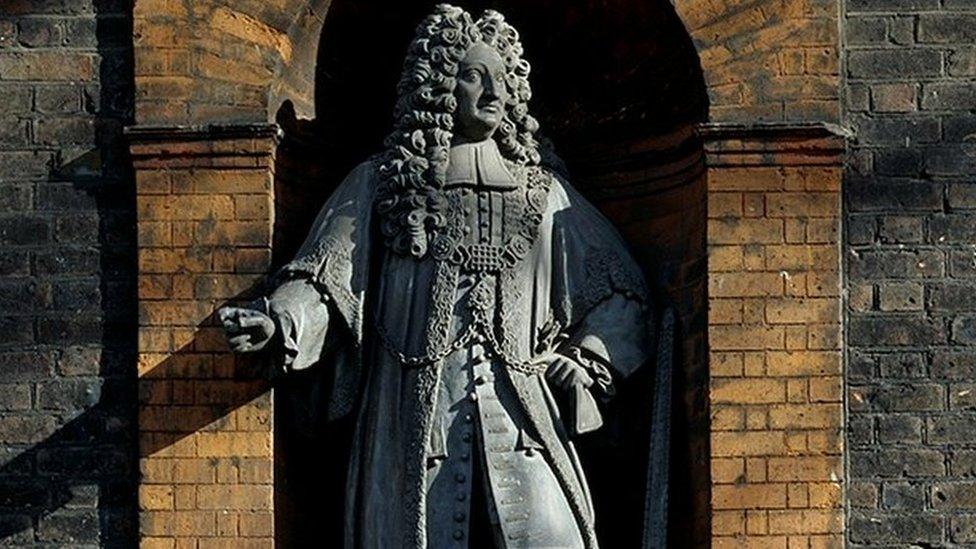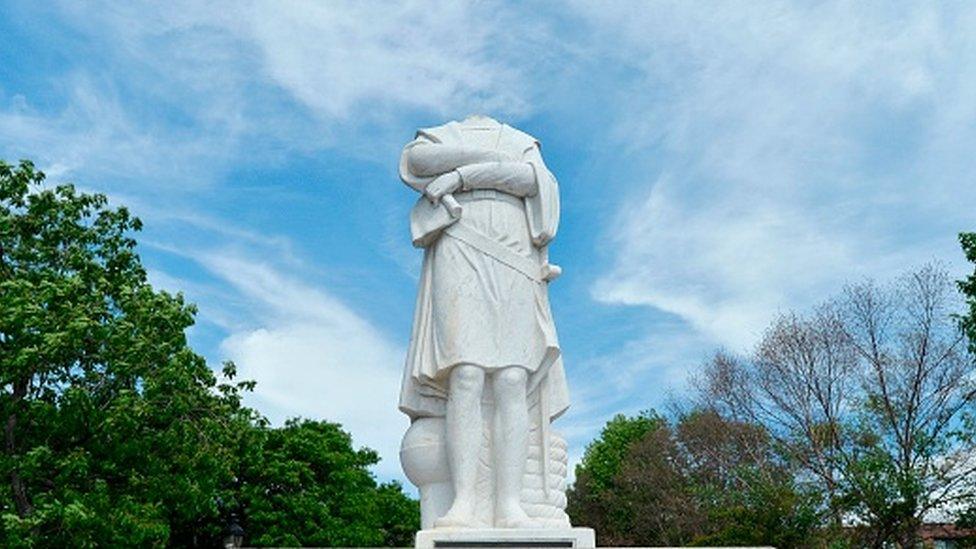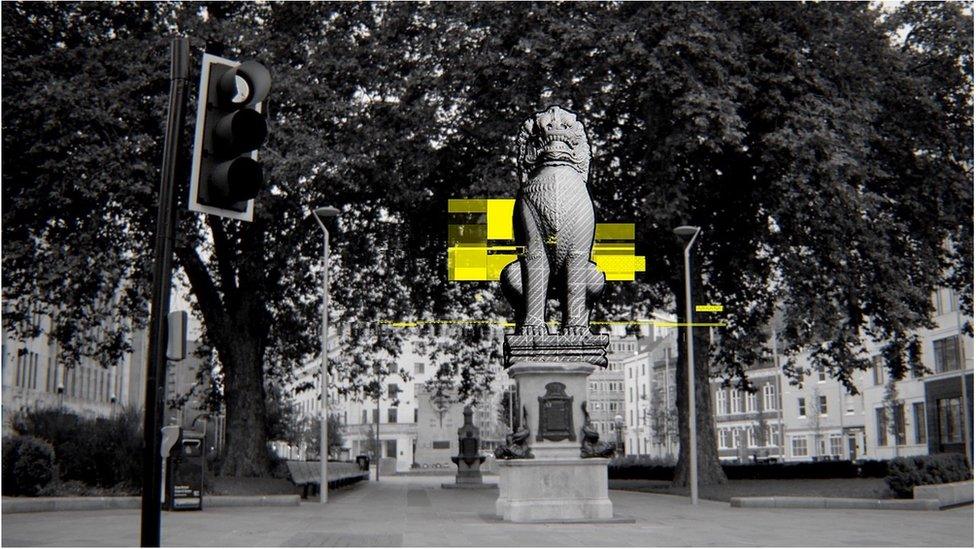Sir Robert Geffrye: Museum of the Home wants statue moved
- Published

The statue of Sir Robert Geffrye is on the almshouses which make up the Museum of the Home
A controversial statue of a slave merchant may be moved by an east London museum following a public campaign.
The monument of Sir Robert Geffrye, who made part of his wealth from slavery and the East India company, is above the entrance of The Museum of the Home.
A consultation by the museum in 2020 found most people wanted it removed.
But the then culture secretary, Oliver Dowden, said it should stay and the museum should explain his role in the slavery trade.
According to the museum, Sir Robert was involved in the East India Company and Royal African Company, invested in the forced labour and the trading of enslaved Africans, and part-owned a slave ship called the China Merchant.
In 1685 he served one term as Lord Mayor of London. When Sir Robert died his money was used to build the almshouses in Hoxton in which the museum is based.
'Full Story'
The museum in Hoxton has now said it thinks it could be moved to a less prominent site at the venue in Kingsland Road.
"We believe there is potential to retain the statue on site but in an alternative and less prominent space, where we can better tell the full story of the history of the buildings and Robert Geffrye's life, including his involvement in transatlantic slavery," it said in a statement.
"We are confronting, challenging and learning from the uncomfortable truths of the origins of the museum buildings, to fulfil our commitment to diversity and inclusion."
The Local Democracy Reporting Service said it would have to apply for listed building consent to move the statue and it was waiting for new government guidelines "on effective decisions concerning heritage".
In September 2020 Culture Minister Matt Warman told MPs the UK's heritage should not be removed from view "however contentious".
Campaigners including Hackney Stand Up to Racism, Hackney and Islington National Education Union, the Claudia Jones Organisation and Kurdish and Turkish community group Day-Mer have called for a boycott of the museum until the statue is taken down.
Sasha Simic, a member of Hackney Stand Up to Racism, said: "It is good that the museum acknowledges that having a statue of a slaver standing over the museum is a problem and that they publicly declare they'd like to take it down.
"It's no good the museum arguing that they will remove the statue when the government lets them. They know that isn't going to happen.
"If they seriously want the statue down they will have to cross the government and bring it down."

The museum, which was previously called The Geffrye Museum, opened to the public in 1914
The museum ran the consultation last year in partnership with Hackney Council following anti-racism protests sparked by the death of George Floyd in the US. About 2,000 people overwhelmingly said they wanted it removed.
At the time, Hackney councillor Carole Williams told Mr Dowden "local people said under no uncertain terms that a statue of a slave trader has no home on their doorstep".
When the museum reopened in June 2021, a panel was installed beneath the statue which explains his connections with slavery and said it "acknowledged the statue was the subject of intense debate".
- Published30 July 2020

- Published30 July 2020

- Published24 July 2020

- Published21 July 2020

- Published9 June 2020
